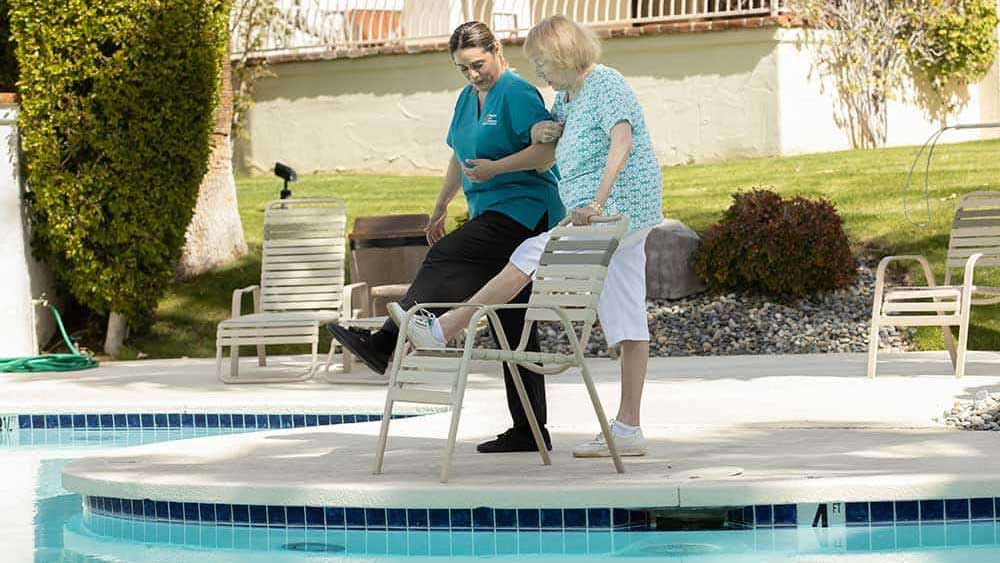

Bone Health 101: Essential Tips for Seniors To Stay Strong and Fracture-Free
The human skeleton is the internal framework of bones and cartilage that helps anchor muscles in place, protect our organs from injury, and store calcium. We don’t give much thought to the 200-plus bones in our body unless we suffer a bruise or break. Many people with bone loss display no symptoms and, therefore, don’t know they have brittle bones until something happens. That is why it is important to know the risks and what you can do to lessen bone depletion and keep your body strong and bones resistant to breakage.
Our Bones Peak at Age 30
Humans reach peak bone density by age 30. The body continuously regenerates bone tissue over our lifetime, but as we age, we lose more bone mass than we gain, which puts older folks at greater risk of breaking bones when taking a fall, any fall. Among the adult population, seniors are most prone to falling. The risk of fracture increases for seniors with osteoporosis, a bone disease that develops when bone mineral density and bone mass decrease or when the quality or structure of bone changes.
The trouble is that many people with osteoporosis display no symptoms and, therefore, have no clue they have weak, brittle bones until they suffer a fracture. Even a low-impact fall can result in a break for someone with osteoporosis. All it takes is one bad fall for a senior’s life to radically, perhaps irreversibly, change. A broken hip or ankle, for example, requires surgery and months of rehabilitation, with no guarantee of moving or walking normally again.
The Risks and Relation to Bone Density
A person’s bone health depends on how much bone mass they’ve built up when young and how well they’ve maintained bone density over the years. The more good bone you bank in your youth, combined with healthy living habits, the less likely you will develop osteoporosis or run the risk of fracture should you fall.
A calcium-rich diet is important for building and maintaining healthy bone mass, but it won’t reverse or “cure” osteoporosis. However, there are drugs that can slow bone loss, thus enabling at-risk seniors to hold their own when it comes to bone health.
Women are more at risk of osteoporosis than men. And women of Hispanic or Asian descent are generally at higher risk. Other risk factors include:
- Family history
- Sedentary lifestyle
- Calcium and vitamin D deficiencies
- Low body weight and a small frame
- Diabetes
- Certain medications, such as steroids
- Heavy tobacco and alcohol consumption
Too much thyroid hormone can cause bone loss. In women, bone loss increases dramatically at menopause due to reduced estrogen levels. Prolonged absence of menstruation (amenorrhea) before menopause also increases the risk of osteoporosis. In men, low testosterone levels can cause a loss of bone mass.
Severely restricting food intake and being underweight weakens bone in both men and women. Weight-loss surgery and conditions such as celiac disease can affect your body’s ability to absorb calcium.
Long-term use of corticosteroid medications, such as prednisone, cortisone, prednisolone, and dexamethasone, is damaging to bone. Other drugs that might increase the risk of osteoporosis include aromatase inhibitors to treat breast cancer, selective serotonin reuptake inhibitors, methotrexate, some anti-seizure medications, and proton pump inhibitors.
The Prescription: Keeping Your Bones Fit
The good news is that there are lifestyle practices you can do to minimize bone depletion and keep your body strong and bones resistant to breakage. Anything you can do to prevent so-called fragility fractures is worth it. That’s why experts advise the following proactive steps:
- Stay active and moving.
- Do regular weight-bearing exercises, such as walking, jogging, climbing stairs, yoga, tai chi, dancing or gardening, to keep muscles strong. Strong muscles protect bones and promote good balance.
- Eat a calcium-rich diet. Good sources of calcium include dairy products, almonds, broccoli, kale, canned salmon with bones, sardines, and soy products such as tofu. If you find it difficult to get enough calcium from your diet, ask your doctor about supplements.
- Make sure you’re getting enough vitamin D. Your body needs vitamin D to absorb calcium. Good sources of vitamin D include oily fish, such as salmon, trout, whitefish and tuna. Also, mushrooms, eggs and fortified foods, such as milk and cereals, are good sources of vitamin D. Sunlight also contributes to the body’s production of vitamin D. If you’re worried about getting enough vitamin D, ask your doctor about supplements.
- Remove tripping hazards in your home. Start by keeping all floors free of throw rugs and piles of things, such as clothes or books, and securing power cords out of harm’s way. Remove any odds and ends from stairs and landings. Take the same inventory outside your home and put up any loose hoses, rakes, shovels, spades, trimmers or other tools. Right at Home offers a FREE Fall Prevention Guide for more tips.
- Be aware of spatial relationships inside and outside your home, and gauge your steps accordingly. Scan floors, stairs, porches, patios, sidewalks, driveways and lawns to avoid potential hazards, such as debris or uneven features. Hold onto railings where available, and consider using a walking stick or cane.
- Slow down. It never pays to hurry or rush, especially if you have a history of balance issues and falls.
- Don’t try carrying more than you can reasonably handle, especially anything heavy, bulky or odd-shaped. If unsure, err on the side of caution and restraint by making two or three trips to complete the task rather than trying to do it in a single pass.
- Ask for help. Independence is great, but many older adults simply cannot safely do things themselves around the house they used to, such as vacuuming hard-to-reach or high spaces, changing overhead lightbulbs, cleaning gutters, doing yard work, shoveling, and sweeping. Don’t even think about climbing a ladder or standing atop a table or chair to get at something. The risk of falling and hurting yourself is too great.
- Address any concerns about your bone health and risk of osteoporosis with your physician. Depending on your medical history, a bone density test may be ordered. It will help gauge your bone mass and rate of bone loss. The results will determine if medication may be indicated to slow bone loss.
How Right at Home Can Help
Right at Home’s professional and trained caregivers can help you be more active. Our caregivers can provide safety supervision, encouragement, and even a steady hand. They can also provide daily health reminders, assist with light housekeeping and meal preparation, or help with mobility and grooming/dressing. Find out more by contacting the closest Right at Home office today and asking for a FREE in-home consultation.







